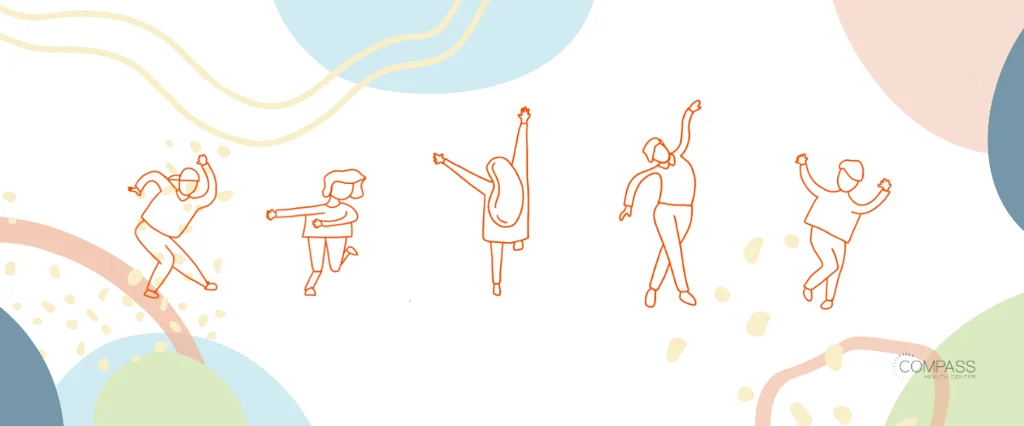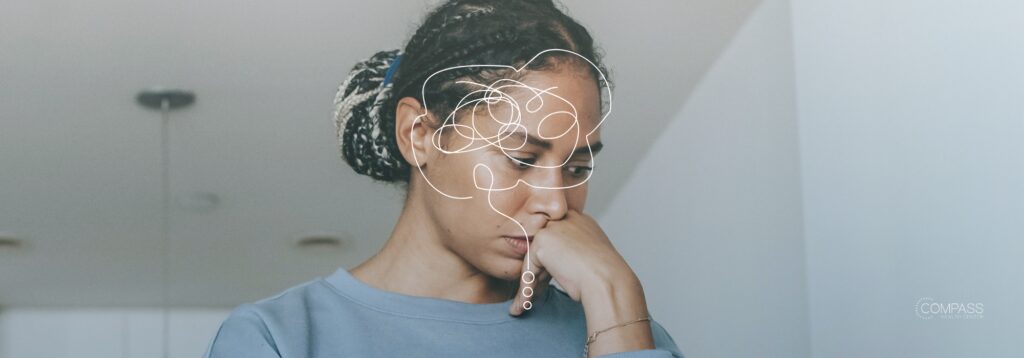
Creative Arts & Experiential Therapies 101: Dance Movement Therapy (D/MT)
Dance Movement Therapy (D/MT)
“Are we really going to DANCE”?!? I often hear this question as I walk into a group room. As I read the faces in the room, I sense confusion, curiosity, trepidation, and sometimes fear. What is this group all about?
Dance Movement Therapy or D/MT, as defined by the American Dance Therapy Association, is the psychotherapeutic use of movement to promote the individual’s emotional, social, cognitive, and physical integration to improve health and well-being. D/MT is learning by doing or experiencing. It is a creative and experiential modality that allows participants to engage with treatment in different and exciting ways. In Partial Hospitalization (PHP) and Intensive Outpatient (IOP) programs, we have utilized D/MT to help participants learn, practice, and experience coping strategies, skills, and exposures in meaningful ways that connect the mind and body. Through movement interventions and group rhythmic work, we explore problem-solving, collaboration, group dynamics/cohesion, non-verbal communication, and regulation.
Why is Dance Movement Therapy Effective?
There are so many reasons why this type of therapy is effective. D/MT increases our self-awareness; integrates the verbal and non-verbal experience; incorporates thoughts, emotions, and body-felt sensations; enables us to feel present in the moment; and helps us regain a sense of control over the body to develop skills to self-regulate. The use of props during the groups such as scarves, ribbons, drums, stretch fabric, balls, parachutes, and more, helps expand opportunities to create and for impact in group. It doesn’t matter the age of the group participants — I often hear a huge reaction when I pull out the parachute! It will sometimes prompt a conversation about kindergarten or games we used to play when we were younger.
During a group with young adults about a year ago, a patient asked, “why don’t we [young adults] play anymore?” What a great question! It really made me think. As we get older our focus often shifts to what we can produce. We get busy with life and tasks. Not to mention how plugged in we are to technology. I like to think of these groups as a way of getting back to interacting with each other. I realized this added benefit over time. We were getting to know each other differently, fostering trust that hopefully enhanced other groups throughout the week, overcoming anxieties and fears together, and truly experiencing joy and fun.
How is Dance Movement Therapy Used in a Group Setting?
My groups differ slightly with the different treatment populations and ages. Generally speaking, I start with an easy warm-up. We move and stretch our bodies from the top down. I ask the group to move however their body needs to move, focusing on noticing any sensations or tightness. Often, we do movements to help balance the right and left hemispheres of the brain. This would include bilateral movement (moving two parts of the body in opposite directions, at the same time). Creating new neural pathways through movement is another important benefit of D/MT. After warm-up, we do what I call non-verbal check in. Standing in a circle, we go around and say our names while doing a movement that is inspired by how we are feeling. The rest of the group repeats each person’s name and movement. This is such a great way for the group to be present, and physically attuned to one another. After the warmups, the group activity is based on what the participants are working on in treatment that day or week.
Drumming is included in all my over-18 groups and sometimes with the younger populations. Group rhythmic work or therapeutic drumming can be very beneficial. It is another way to connect non-verbally. It can be cathartic, grounding, and mindful. Drumming is proven to reduce stress and anxiety. It integrates our senses, and research shows it can regulate our brain waves to help us either speed up (energize) or slow down (relax). Very often, the tone of the drum session reflects the energy and dynamic of the group.
Yes, We Are Really Going to Dance!
As often as I hear “Are we really going to dance?!?!” at the beginning of the group, I just as often hear “this wasn’t what I expected!” at the end. Clients are offered a safe, non-judgmental environment to express themselves creatively and connect with others. We learn about ourselves and our reactions to the group on an embodied level. I often ask my groups to notice how they felt before the group started compared with how they feel after it ends. There is almost always a positive shift in mood, energy, and their bodies. I feel confident that offering this type of therapy enhances our patients’ experiences with and benefits from treatment.
Want to learn more about PHP/IOP programming in general? Check out our resource page, What is PHP/IOP?
Further Reading in this series: Creative Arts & Experiential Therapies 101
%20.png)


